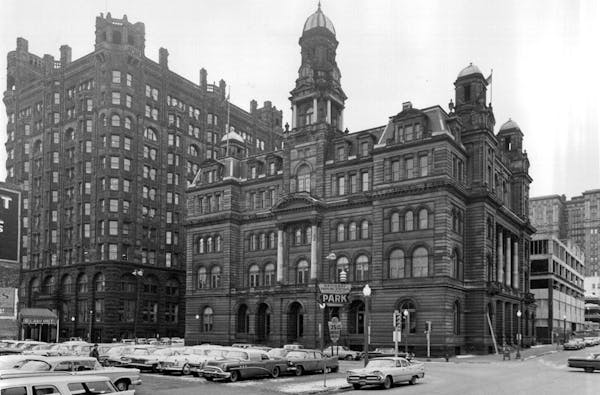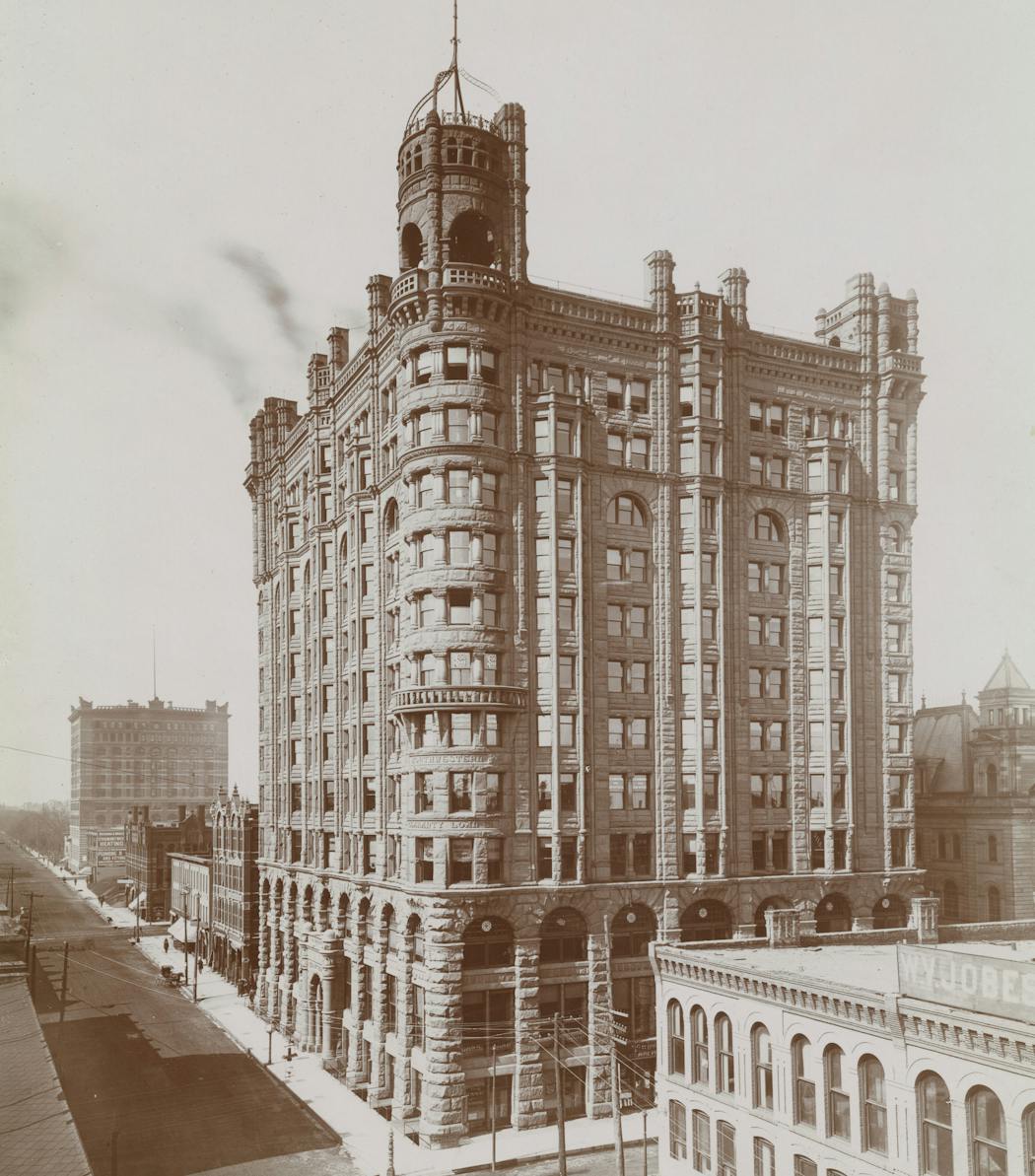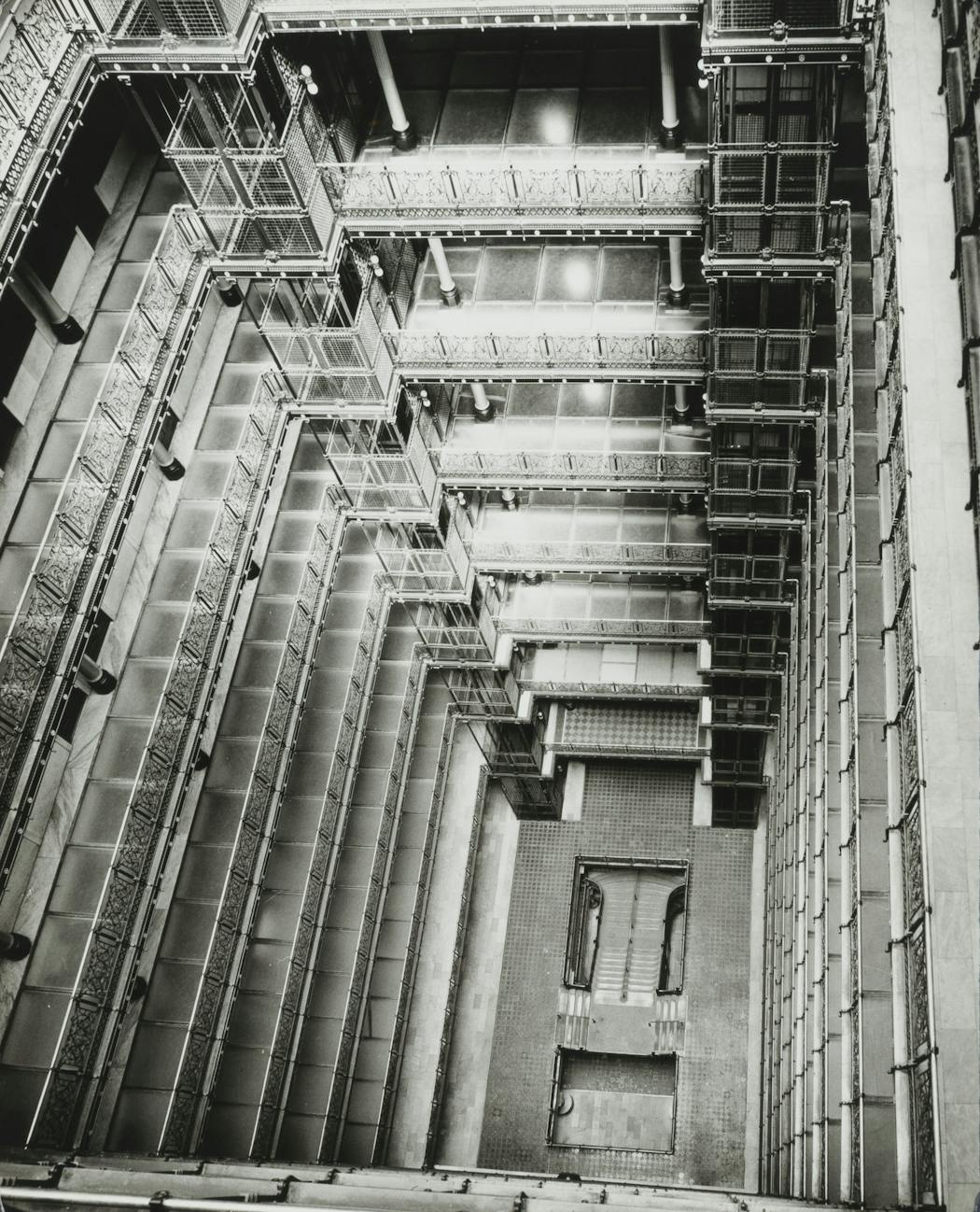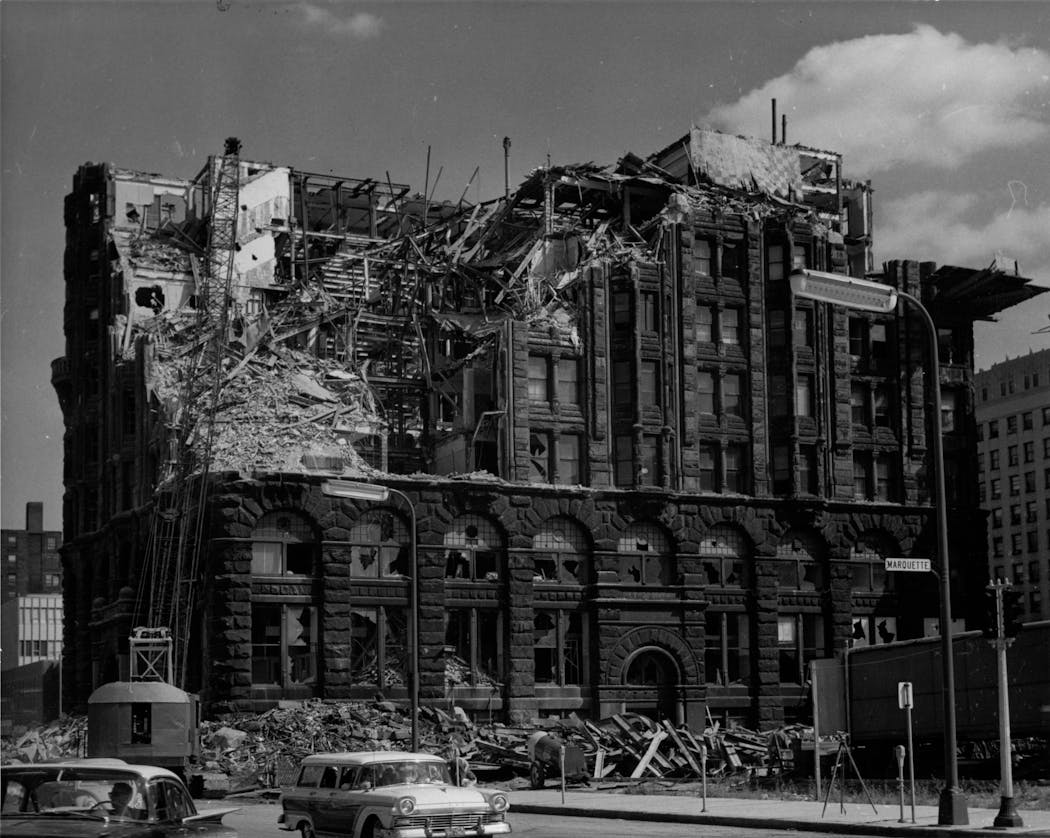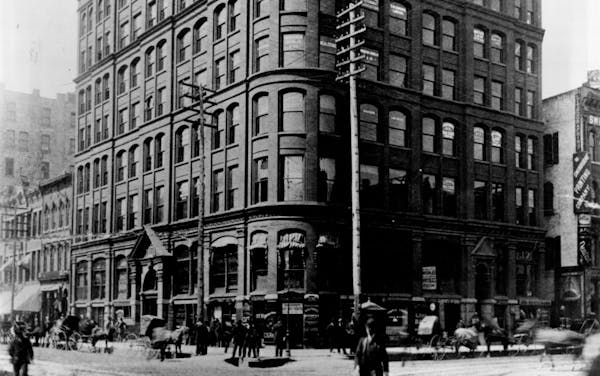When author Larry Millett published "Lost Twin Cities" in 1992, the book's cover featured an image of the glorious interior of the long-demolished Metropolitan Building.
Twenty-six years later, Millett has returned to the downtown Minneapolis landmark with "Metropolitan Dreams" (University of Minnesota Press, $29.95), a well illustrated and thoroughly fascinating account of the building's rich past and ignoble end, viewed from historic, economic, political and architectural perspectives.
Starting in the Gilded Age building boom of the 1880s, Millett illuminates the building's original owner, Louis Menage, and his thriving but ultimately nefarious Northwestern Guaranty Loan Co. The career of the Met's architect, Edward Townsend Mix, also gets its due.
Millett eventually lands in the 1950s and 1960s, detailing the urban renewal forces that eventually leveled the building, a 12-story stone fortress wrapped around a miraculous glass-and-iron interior atrium. No wonder that in "Lost Twin Cities," Millett characterizes the Met's destruction as "perhaps the most inexcusable act of civic vandalism in the history of Minneapolis."
Q: Why should we care about a building that disappeared 56 years ago?
A: Because it occupies a unique place in the history of Minneapolis. It bookended the city's first great period of growth in the 1880s, when the building went up, and urban renewal and freeway building era of the mid-1950s to mid-1960s, when it came down. It was one of the great Victorian buildings in the United States, a really outstanding work of architecture. And now it has come to symbolize all of the ideas we have about preservation.
Q: Its owner, Louis Menage, was a real piece of work, wasn't he?
A: I always view buildings as pegs for stories about people. His business reads like something that would have thrived before the crash of 2008. You read about it and think, "Is this really 100 years old?" You can't make this stuff up. Think of the people like Tom Petters, and Denny Hecker. We've had these figures in American life for a long time. They pile up debt and get in over their head. If the Northwestern Guaranty Loan Co. wasn't a Ponzi scheme, it was certainly in the vicinity.
Q: Is it fair to say that Menage used his building as a very expensive marketing tool?
A: Think about the Foshay Tower, or the Chrysler Building. People have always used buildings — especially large, tall buildings — as a way of symbolizing business success. He wasn't part of the city's elite, he wasn't a Pillsbury or a Washburn. He came up from nothing, so there's something of "I'm going to show you guys."
Q: And he spared no expense, right?
A: It was an absolute top-of-the-line building. Everything about it was better than what you would have typically found in construction at the time. A typical eight- to 10-story building in Minneapolis at the time would have had two elevators. He had seven. Menage wanted it to be a showpiece.
Q: Three years after the building's lavish grand opening, Menage was hiding from the law in Central America, having bilked countless investors. Did the Met age better?
A: It took a fairly normal progression and settled into what we would call a Class C building, with a lot of smaller tenants and, later, a lot of public agencies, including the Housing and Redevelopment Authority. What's interesting to me is, if you look at the interior, how little changed over time. The original doors, galleries and flooring were still there, and the original elevators were still running. They were the last hydraulic elevators of their kind in the Twin Cities, if not the country. The building remained in very sound condition — it wasn't falling apart.
Q: What did you learn about architect Edward Townsend Mix?
A: He was a classic 19th-century architect, very eclectic in his styles. His late buildings — the Met was his last, he had tuberculosis and died four months after it opened — they're very odd. But there's a sensibility that you can see that's very unusual. He was not a genius, but I think he was very good.
Q: For those unfamiliar with the Met, can you describe Mix's design?
A: Outside, it was a castle, it was a fortress of a building, and if you look at what was being done in Chicago at the time, it was kind of old-fashioned. Inside, it was as modern as can be, and that juxtaposition is really interesting. The glass floors in the light court were really a nice touch; they conveyed a sense of modernity to the inside of the building.
Q: What would the Met be like today, had it survived?
A: My theory is that, because of its excellent location near the courthouses, it would be full of high-priced lawyers. The offices would be beautifully restored. Maybe someone would put a restaurant back on the top floor, and maybe there would be another one in the atrium. The rooftop garden would be open — think how trendy that would be.
It could have been easily restored. But the Metropolitan didn't make it through the period because of its location. It sat on a block where they wanted to put new buildings. Had it been two or three blocks away, it would still be here, no doubt.
Q: Why did the city planners in charge of the Gateway urban renewal project hate the Met so much? They were plotting its demise from their offices on the building's 12th floor.
A: The primary reason was aesthetics. They saw it as ugly, as a sore thumb in a neighborhood of shining new buildings. To them it was just an old building that was in the way. And the amount of money they spent to tear down a perfectly good building was well over a million dollars; it was by far the most expensive thing they had to deal with. It was just so unnecessary. They spent more money to tear it down than it was worth in the marketplace. Is that good public policy? I can understand their dream of redoing the Gateway, but they didn't get much in the way of return.
Q: And then the site was a parking lot, for nearly 20 years, right?
A: Yes, it sat empty until that [clears throat] lovely building [330 2nd Av. S.] was placed on the site, in memorial to the Metropolitan. It's a sad story.
Q: Were you ever in the Met?
A: I'm 71, and I'm a member of the last generation to have been in the building. My father brought me downtown when I was 12, and we went to see the building. There was this long farewell, and many people just poured in. Lots of people took movies, there are a lot of them online today. People knew that there was something special about it, but they couldn't convince the people who mattered, including the City Council, which voted 13-0 to basically destroy it. There really wasn't any kind of preservation ethic at the time.
Q: Has Minneapolis learned its lesson?
A: The preservation battle over the Metropolitan was an important event in the preservation consciousness of the Twin Cities. But preservation is a constant battle — there are always forces at work trying to change things. That's the nature of our society, and of capitalism. I'm a preservationist, and I understand that cities have to grow, and change. These battles are going to continue, and preservationists have to maintain constant vigilance. The day will come when someone is going to want to replace the IDS Center. It's going to happen, hopefully not in my lifetime.
About 1 in 4 US adults over 50 say they expect to never retire, an AARP study finds
Music Review: St. Vincent's art-rock burns bright on seventh album, 'All Born Screaming'
Cristian Măcelaru to become music director of Cincinnati Symphony Orchestra in 2025-26
Italy bans loans of works to the Minneapolis Institute of Art in a dispute over an ancient statue

